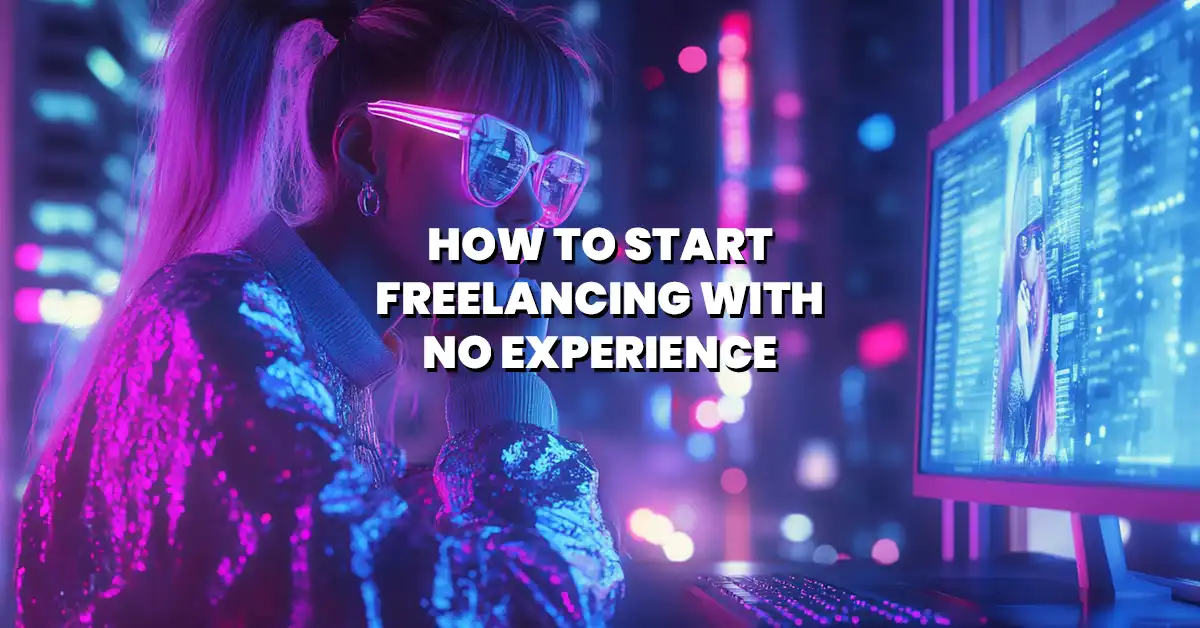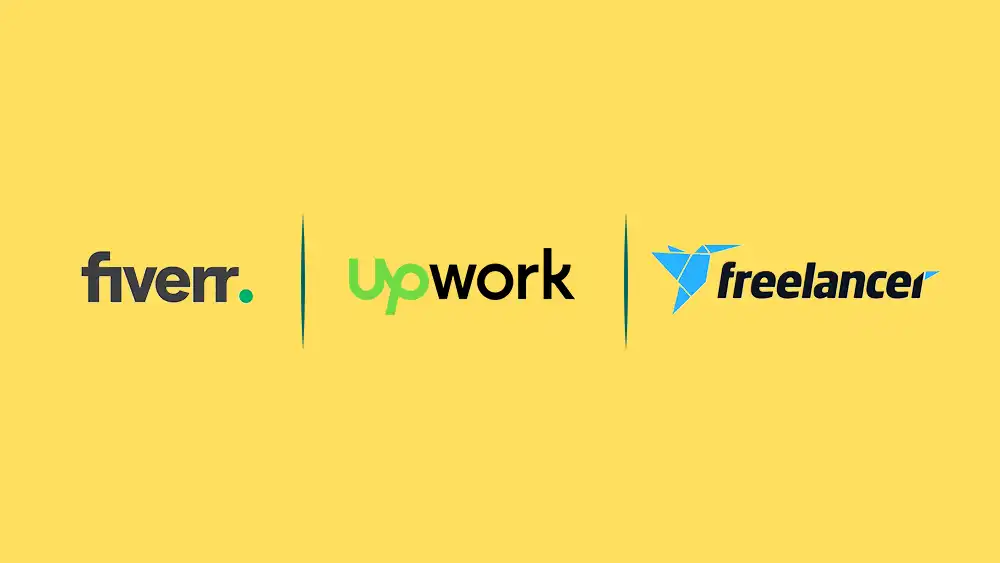
“No experience? No problem. Your laptop and Wi-Fi are all you need to start earning from your skills.” Sounds impossible? It’s not. The freelancing world is massive, and you can dive in even if your resume is looking a little slim. Whether you’re just trying to pay off those endless student loans or looking to build a side hustle, the gig economy doesn’t discriminate. Ready to learn how to break into freelancing with no experience? Grab your coffee (or energy drink), and let’s get started.
Why Experience Isn’t the Deal-Breaker You Think It Is
Here’s the secret: Experience is overrated when you’re just starting out. Clients don’t care how many years you’ve been designing logos or writing content if you can deliver quality. What they really want to know is, “Can you solve my problem?”
The freelancing world is results-driven, which means your ability to market yourself, communicate well, and deliver value matters more than your lack of past clients or fancy certifications. The key is positioning yourself as someone who knows what they’re doing, even if you’re still figuring it out.
Picking Your Platform: Fiverr, Upwork, or Freelancer?

Your choice of platform will set the tone for your freelancing journey. The big three – Fiverr, Upwork, and Freelancer – each come with their own vibe. Let’s break them down:
- Fiverr: The Hustler’s Playground
Fiverr is the platform for beginners who want to dive in fast. You create gigs based on your skills, and clients come to you. The cool part? You can list almost anything – from designing TikTok graphics to writing quirky product descriptions. It’s easy to set up, and you can start at a low price to attract your first buyers. As you gain traction, you can increase your rates and offer premium packages. - Upwork: The Corporate Freelance Gig
Upwork is for those who want a more professional feel. It’s project-based, meaning clients post jobs and freelancers bid on them. While it’s a bit more competitive, Upwork offers a wide range of jobs, from entry-level gigs to high-paying contracts. The downside? You’ll need a strong proposal game to stand out. - Freelancer: The Wild West of Gig Sites
Freelancer is like a mix of Fiverr and Upwork. It has a bidding system similar to Upwork, but with gigs and contests where you compete for projects. While it’s not as beginner-friendly as Fiverr, it can be a good spot if you’re willing to navigate its less streamlined interface.
So, which is best for beginners? Fiverr tends to be the easiest way to get your foot in the door. You create a gig, promote it, and clients come to you. But if you’re confident in writing proposals and want to build more serious client relationships, Upwork is a solid choice.
Soft Skills: The Hidden Weapon for Freelancers
Everyone talks about hard skills like graphic design, coding, or writing, but let’s talk about the secret sauce: soft skills. These are the abilities that will set you apart when you don’t have much experience under your belt.
- Communication is Key: Clear, concise, and friendly communication can win you jobs before anyone even looks at your portfolio. Clients love freelancers who respond quickly and are easy to work with. Learn how to pitch yourself and follow up professionally.
- Time Management: Freelancing means managing your own deadlines, which can get messy if you’re not organized. Use tools like Trello, Google Calendar, or Notion to track your tasks and ensure you never miss a deadline.
- Adaptability: Every client is different. Some are super detailed, others are vague. Being flexible and figuring out what your client really wants (even if they’re not the best at explaining) is a skill that will make you stand out.
- Problem-Solving: Freelancing isn’t just about completing tasks – it’s about solving problems. Clients will love you if you can spot issues they haven’t even noticed yet and offer solutions before they ask.
Building a Portfolio from Scratch

“But I don’t have any past work to show off!” No worries. You can build a killer portfolio even if you’ve never had a client. Here’s how:
- Create Sample Projects: Design logos for imaginary businesses, write blog posts on topics you enjoy, or make mock-ups of websites. These samples don’t have to be for real clients; they just need to show your skills.
- Offer Free or Discounted Work (Strategically): This doesn’t mean giving away all your services for free, but consider offering a few projects to non-profits, friends, or small businesses in exchange for testimonials. Make sure the work aligns with the services you want to offer.
- Show Your Process: Clients love to see how you think. Break down your workflow, from brainstorming to the final product. Share this on your portfolio site or social media.
The Art of Pricing: When You’re Starting from Zero
Pricing is tricky, especially when you’re new. Charge too low, and clients might think you’re inexperienced. Charge too high, and you might scare away potential gigs. Here’s a formula for beginners:
- Start Low, But Don’t Undersell: On platforms like Fiverr, you can start with entry-level pricing to attract your first few clients. Once you have some reviews and completed projects, gradually raise your rates.
- Offer Value Packages: Instead of offering just one service, bundle your skills. For example, if you’re a writer, offer a package that includes keyword research, SEO, and editing. Clients love getting more for their money.
- Research Competitors: See what other freelancers at your level are charging. It’ll give you an idea of where you should position yourself.
- Factor in Your Time: Freelancing isn’t just about delivering work – you’re also spending time marketing yourself, communicating with clients, and managing projects. Make sure your prices reflect all the effort that goes into freelancing.
Landing Your First Client: It’s All About Strategy

Getting that first gig is the hardest part, but once you do, it gets easier. Here’s how to hustle your way to your first client:
- Craft a Killer Profile: Whether you’re on Fiverr or Upwork, your profile needs to be on point. Write a compelling bio that highlights your soft skills and what makes you unique. Don’t just say, “I’m a graphic designer.” Say, “I create bold and memorable designs that help brands stand out in a crowded market.”
- Leverage Social Media: Post about your services on LinkedIn, Instagram, or TikTok. Show off your work and let people know you’re open for business. You’d be surprised how many clients come from just casually sharing what you do.
- Send Cold Pitches: If you’re on Upwork, you’ll need to send proposals to win jobs. Personalize each pitch – no one likes a generic copy-paste message. Address the client’s specific needs and explain how you can solve their problem.
- Join Online Communities: Freelancing groups on Reddit, Facebook, or Discord are gold mines for beginners. You can network, learn from others, and sometimes even find job postings from clients looking for freelancers.
Handling Rejections and Staying Persistent
Freelancing is competitive, especially when you’re new. You might send out a bunch of proposals and hear nothing but crickets. That’s okay. The trick is to not take it personally. Each rejection is a chance to improve. Maybe your pitch needs tweaking, or your pricing is off. The more you refine your approach, the better your chances get.
Remember, every successful freelancer was once a beginner with no clients, no portfolio, and no idea what they were doing. Consistency, learning from feedback, and evolving your strategy are the keys to getting past that initial hump.
Leave a Reply